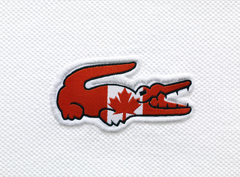Why Paleontology Is Relevant
In these times of budget cuts and belt-tightening, you might wonder why our government, universities, and museums should fund paleontological research. After all, there are bridges to repair, children to educate, and fires to put out. Few would disagree the latter problems all deserve our attention and our tax dollars. But what about paleontology?
When trimming budgetary fat, why isn’t paleontology something that falls clearly in the “non-essential” column? Is it even relevant to today’s world? Does it provide value to other scientific fields? Professional paleontologists understand why our field is relevant and can articulate that to an academic audience, but I don’t know how well we communicate its value to the public. These are the five “public-friendly” justifications I hear most often:
- “Paleontologists teach anatomy at many medical schools.”
- “Fossils play an important role in oil discovery.”
- “Paleontology is a good ‘gateway drug’ to the other sciences.”
- “Paleontology is a good way to teach critical thinking skills.”
- “Paleontology is inherently interesting; it doesn’t need further justification.”
These responses are pretty abysmal, in my opinion. Yes, they’re all true, but I personally wouldn’t blame the government, university, or natural history museum who instantly defunded paleontological science based on any of them.

Image accessed here.
I think there is a better way to articulate the importance of paleontology, one that focuses on its scientific necessity and directly links our field to today’s world:
Paleontology is the study of the history of life. Because that history is written in the fossil and geological record, paleontology allows us to place living organisms in both evolutionary (life-historical) and geological (earth-historical) context. It is this contextual background that allows us to interpret the significance of characteristics of living organisms, and the significance of biological events occurring today.
The benefits of having such context are not limited to:
- Determining the evolutionary identity of living and past organisms
- Determining cause-and-effect relationships (How do things actually change under x, y, z conditions? )
- Gaining predictive power with regards to rare events that have been experienced in the past, and may be experienced again in the future
- Understanding the relative magnitude of changes happening in today’s world
These are above and beyond any of the fringe benefits that paleontology also facilitates (“gateway science”, critical thinking skills, anatomy instructors, it’s inherently cool, etc.).

Image (c) 2006 Thomas Kraft CC BY-SA 2.5; accessed on Wikipedia.
Now, I’m not arguing that you can’t figure out some of these things without paleontology. We use many lines of evidence in addition to the fossil record of anatomy to determine the evolutionary identity and relationships of organisms, including DNA and developmental sequences, which often aren’t preserved in fossils (but sometimes are!). You can infer the evolutionary history of some body parts or characteristics when you the understand relationships among organisms, and you can often test function of individual body parts directly. But in all these cases, your data are improved by observing the direct record of change through time that only the fossil record provides.
The fossil record is the only source of natural (as opposed to experimental or theoretical) examples of what happens to living organisms under conditions the Earth is not experiencing today. For example, let’s say you want to know what happens to animals when the Earth gets much hotter – maybe five or seven degrees warmer than today’s average annual temperature. The last time this happened was during the Miocene (~14.8 million years ago), but it’s been that hot several times in Earth’s history. The fossil record shows that temperature increases have similar effects every time they happen. For example, warm-adapted animals expand their range north- and southward from tropical regions, so animals like crocodylians and monitor lizards live happily in places like Canada and Europe (Böhme 2003). Ectotherms get much, much bigger (think 42-foot snakes; Head et al. 2009).
Because these changes happen when temperatures go up and the reverse happens when temps go down, we can infer a cause-and-effect relationship between global temperature and various aspects of animal biology based on actual evidence. It happened before. It will happen again, if conditions are right. This is why paleontology is critical for predicting the effects of climate change at several scales.

Image accessed here.
In cases where you want to understand the magnitude of current change, the fossil record is again your only source of context. For example, many vertebrate species have gone extinct in the last 500 years. Some of these extinctions resulted from habitat loss (e.g., the dodo) or overhunting (the dodo and the moa), some indirectly from climate change, and some from disease (chytrid fungus in amphibians, or white-nose fungus in bats). Many, many more species are threatened with extinction (“critically endangered” means they’re not likely to last long, folks). If all of these species do go extinct in the next century, how bad would that be? Are we experiencing normal levels of extinction, or are we experiencing a mass extinction? The answer requires knowing what the normal rates are, and how mass extinctions are different. That understanding can only come from the fossil record.
To answer the above question, in 2011, Anthony Barnosky and colleagues published a study in Nature that compared the modern rates of extinction to those during the “Big Five” mass extinctions (times where 75% of the world’s species went extinct in a short amount of time). They determined that if only the species we consider critically-endangered go extinct over the next 100 years, at that rate would mean it would take 890-2270 years to reach 75% extinction (mass extinction levels). If, however, all the species we consider “threatened” also go extinct, we’ll hit that point within 540 years. Both of these are blinks of an eye in geological terms (faster than the end-Cretaceous extinction that wiped out the non-bird dinosaurs), but over two hundred years or two millenia we might be able to reverse some of these trends. They also showed the duration required to get to 75% is longer than the duration of some (though not all) of the “Big Five” extinctions. Some good news: we’re not experiencing mass-extinction level rates right now.

Image from: Barnosky et al. (2011), Nature.
I think if we were asked why studying American history or world history is important, we could make all of these same arguments and come up with a similar list of benefits. In fact, The American Historical Association did just that. This parallel between the relevance of life’s history and the relevance of our cultural history is a good one. When paleontology is reduced to cataloging the weird things that once were, it instantly becomes as irrelevant to our own time as cultural or political history would be, if it were reduced to a list of things that once happened.
References:
Barnosky AD, et al. 2011. Nature 471: 51-57.
Böhme M. 2003. Palaeogeography, Palaeoclimatology, Palaeoecology 195: 389-401.
Head JJ, et al. 2009. Nature 457: 715-717.
